Succulents, like the Baby Sun Rose, could be an ideal addition to your home or garden, regardless of the season.
Thanks to their hardy nature, they are easy to care for, perfect if you love having plants around but are discouraged by the demanding upkeep some require. Flourishing in different temperatures and times of the year, these blooms add a lively pop of color to your landscape, lifting the aesthetic and brightening any side of your garden.
In particular, the Baby Sun Rose plant is highly tolerant of neglect and often thrives in such conditions. Even during the harsh season of drought, these plants retain their top shape and continue to perform remarkably well. Their resilience, coupled with the minimal care they need, makes them an irresistible addition to the plant care regimen of many garden enthusiasts.
However, if you wish for this plant to flourish and reproduce, there are a few things you need to know about its care. For instance, these succulents require certain key nutrients to blossom, and the bees they attract to their bright side play a significant role in their pollination.
Read on for a comprehensive guide on caring for the Baby Sun Rose succulent plant, how to propagate it, and how to maintain its vibrant blooms in top shape, no matter the season.
Overview
| Family: | Aizoaceae |
| Genus: | Mesembryanthemum |
| Botanical Name: | Mesembryanthemum cordifolium |
| Synonyms: | Aptenia cordifolia, Litocarpus cordifolius, Ludolfia cordifolius, and Tetracoilanthus cordifolius |
| Common Names: | Baby Sun Rose, Aptenia cordifolia variegata, Heartleaf Iceplant, Red aptenia, Heart-leaved aptenia, Heart-leaved midday flower |
| Origin: | Eastern Coastal Plains of South Africa |
| USDA Hardiness Zones: | 10 – 11 |
| Size: | 4 – 6 inches tall (10 – 15 cm) and spreads up to 2 ft. (60 cm) |
| Sun Exposure: | Full sun to partial shade |
| Water Needs: | Water thoroughly but infrequently |
| Soil Type: | Well-draining soil |
| Temperature: | 70˚F (21˚C) during the day and 40-50˚F (5-10˚C) at night |
| Humidity Levels: | 40-50% |
Mesembryanthemum cordifolium, commonly known as the Baby Sun Rose, was previously classified as Aptenia cordifolia. This perennial succulent flowering plant is native to South Africa from the Aizoaceae family. Serving as a fantastic year-round addition, this captivating garden feature enhances your landscape’s aesthetic appeal with a refreshing touch.
The Baby Sun Rose is a low-growing ground cover succulent that forms a dense mat with many branching stems emerging from a woody base. It maintains its shape even in areas deficient in nutrients or subjected to drought conditions, making it an excellent choice for landscape design.
The fleshy stems are rounded and can reach up to 6 inches (15 cm) in length. The succulent leaves are fleshy, bright green, and heart-shaped, measuring up to 1.2 inches (3 cm) in length. This characteristic foliage adds to its visual appeal and versatility in various spaces, regardless of the season or location they are planted in.
The flowers, typically pink to purple, create a lively spectacle during the sunniest hours of the day. Blooming in the leaf axils, they attract bees, hummingbirds, and other pollinators with their vibrant colors. The sight of these blossoms can brighten up any corner of your garden.
Although the common name for the Mesembryanthemum cordifolium is Baby Sun Rose, it has several other names:
- Aptenia cordifolia variegata
- Heartleaf Iceplant
- Red aptenia plant
- Heart-leaved aptenia
- Heart-leaved midday flower
How To Care for Baby Sun Rose (Mesembryanthemum Cordifolium)
Baby Sun Rose care is very simple; this hardy and low-maintenance succulent plant can be grown indoors or outdoors and does not need much attention to thrive.
It can adapt to changing temperatures and times and requires minimal nutrients compared to other plants.
Here are the essential guidelines for caring for Mesembryanthemum cordifolium, useful for every plant growing season of the year.
Sun Exposure & Light Requirements
The Baby Sun Rose succulent plant thrives in full sun to partial shade (ideally, 6 to 8 hours of sunlight daily), making it a perfect succulent for indoors and outdoors.
When grown indoors, Baby Sun Rose can be placed near an east- or west-facing window, where it will receive bright sunlight early or late in the day.
Avoid placing it in direct sunlight when the sun is strongest in the middle of the day, which may damage the plant. Proper plant care can prolong the life of these succulents, allowing you to enjoy their colorful blooms for longer.
When grown outdoors, consider placing the plant in an area where it will receive indirect bright light all or most of the day. A hanging basket could also be a good option here, hung on a wall in a shady section of the garden.
As with any succulent, the key to success with the Baby Sun Rose is to allow the soil to dry out between waterings.
Watering Requirements
It needs to be watered thoroughly when the soil is completely dry. Make sure to squeeze the soil to check its dryness levels.
In general, water once every one to two weeks in the summer and once every two to three weeks in the winter. This caters to their natural resistance to drought, making them perfect for warm temperatures and dry climates.
It will need more frequent watering in hot weather, while it will be less frequent in cool weather.
If the soil is allowed to remain damp for long periods, the roots will rot, and you risk losing this beautiful plant.
Baby Sun Rose thrives in well-draining soil. The right balance of nutrients ensures their growth and the vibrancy of their blooms.
Soil Requirements
A succulent or cactus soil mix is best; this soil type provides excellent drainage.
To ensure your soil drains well, you should implement the following mix:
When grown in the ground, Baby Sun Rose will be best suited in either gravelly or sandy soil. These soils usually lack in nutrients but are perfect for drought-tolerant plants like these.
- 1 part cactus potting mix
- 1 part coarse sand
- 1 part perlite
However, if your plant is grown as a houseplant, the soil must be potted in a succulent/cactus potting mix. Adequate plant care, such as this, will ensure lush and vibrant growth.
Temperature and Humidity
The ideal temperature for the Baby Sun Rose is approximately 70˚ F during the day and between 40 and 50˚ at night, which means it can adapt to a range of temperature conditions.
In these conditions, your Baby Sun Rose will grow very well. You should be aware that continuous exposure to high heat can cause leaf loss and poor flowering problems, which may, in turn, affect the number of bees visiting your garden landscape.
Achieving the ideal moisture content for your Baby Sun Rose plant involves maintaining an average humidity of approximately 40-50%. Controlling this lot of moisture is a crucial way to ensure their health.
Higher humidity levels may invite fungi and cause the plant to rot, while on the other hand, lower levels can interfere with photosynthesis and cause leaf drop.
As the plant matures and becomes bigger, you will notice that it adapts better to sudden temperature changes and high or low humidity levels.
Generally speaking, if you can keep your home environment’s medium adequately humid during winter and provide a decent light source – say, by placing the pots near windows or in a well-lit section – you should be able to take care of your Baby Sun Rose easily.
If you place your Baby Sun Rose in a sunny spot with good air circulation, such as a south-facing windowsill or a well-lit section, you should be able to ensure it receives the proper amount of sunlight and ventilation it needs to thrive.
Fertilizing
This diluted solution should be watered directly into the soil around your Baby Sun Rose plant, generously covering its surface. Of course, aftermath watering is advisable to spread the nutrients evenly and prevent any potential harm from concentrated fertilizer.
Remember, overfertilizing or using the wrong kind of fertilizer can harm your plant, so tread with caution when fertilizing. It’s important to ensure a balance on all sides – too much or too little nutrients can hinder the plant’s growth.
Potting and Repotting
The Baby Sun Rose is commonly used as a groundcover, which means it is often planted between other plants, providing plenty of lush greenery. They also thrive well in pots and containers with sufficient drainage, such as an unglazed, porous terracotta pot.
You can accurately judge if your plant needs repotting by observing the state of the soil. If it seems like it has been completely used up and does not hold together when compressed, then it is probably time for a new pot.
Stagnation in growth could be another indicator that it’s time to replant the Baby Sun Rose.
When repotting your Baby Sun Rose, first remove the plant from its old pot. Then, gently tease apart any roots that may be matted or tangled on the surface. Be careful not to disturb the dense root ball too much; if the Baby Sun Rose’s roots are damaged, they may not grow back.
After you have freed up some of the roots, carefully add in some new succulent soil around the roots, but ensure to leave about an inch of space between the edge of the root ball and the top of your container for plenty of breathing room.
Though the soil should appear moist on the surface, you must not water your Baby Sun Rose for at least one week after replanting, allowing the roots to settle into their new home.
Pruning
The Baby Sun Rose can be invasive, so it is essential to prune the plant, creating plenty of space on all sides. The pruning process should be done in early spring before any new growth emerges.
You should cut off any dead or dying stems as soon as they appear on the plant’s sides. Cut them at an angle near a joint for the best results.
Regularly pruning the Baby Rose plant is advisable to promote regrowth and fresh, new growth. This ensures the plant doesn’t run out of room on the surface of the pot.
The tips of the stems are softer, and they get damaged or deteriorate faster if you cut them without care. Hence, plenty of attention is required when pruning these sensitive parts.
Over time, you’ll notice that those stem tips will turn brownish, so it’s best to prune them as soon as possible. Observing these changes on the surface will help maintain the plant’s health.
In some cases, cutting the entire branch off is advisable to promote new growth from the base of the plant. This practice allows for plenty of space for the plant to spread.
Also, if your plant is growing in a crowded pot and its branches are overlapping with others, or they’re starting to take up too much surface area in the pot, it’s best to gently remove them and repot them in another pot with fresh soil.
Pests and Diseases
Despite presenting a few problems, the Baby Sun Rose plant requires regular care and observation for pests and diseases. Thus, it requires plenty of attention, even if it is a robust species.
With the right care and plenty of attention, the Baby Sun Rose plant will prove to be a resilient and rewarding addition to your green space. Living up to their resilient nature, being a succulent plant means it will be subjected to root rot if kept in humid conditions.
To avoid this, let the soil—much like the soil around a tree house nestled in the thick foliage—dry out completely before watering again. If this alone does not solve the problem, try repotting in fresh soil. Sometimes a different variety of soil is all a plant needs to thrive.
Other potential problems for your Baby Sun Rose are related to the wild’s wildlife: pests, specifically mealybugs and scale insects, that might flutter and crawl about in ways similar to butterflies.
Mealybugs can be a nasty surprise, appearing as small white dots on your plants, and can be identified by the cottony substance they excrete. It’s a striking contrast to the thick, firm texture of a healthy succulent.
They may not look like much, but their impact can be as devastating as a disease ravaging through a forest of trees. If present, wash your plants with a small amount of dish soap in water or apply rubbing alcohol to affected areas. Repeat this use every three days, similar to the changing seasons, until the problem has been solved.
Scale insects, while less noticeable than their mealybug counterparts, can be just as destructive. These tiny, brown bugs attach themselves to your plant much like a tree clinging to its leaves in autumn.
You can tell if you have these if they’re clustered together like varieties of autumn leaves in one area of the plant, and the leaves look like they’ve been sucked dry (which they probably have).
To remove these pesky insects, carefully pour rubbing alcohol over infected areas every three days until all pests are gone.
Now, just like a house feels clean and refreshed after a good spring cleaning, it’s necessary to keep the environment in your home clean to reduce the chance of these pests returning after you’ve successfully removed them.
Caring for Baby Sun Rose Succulent in Winter
Baby Sun Rose winter care largely relies on the climate of your location, somewhat like trees adapting to the changing seasons. But there are some things you can do to ensure that they stay healthy throughout winter. It’s like wrapping up your favorite butterfly in extra care as the cold sets in.
In regions with snow and harsh winters, it is advisable to either relocate your succulents indoors or maintain them within a cold, unheated greenhouse. Move them under these conditions by the end of fall so they can adjust to this new environment before winter arrives.
Baby Sun Rose succulents can be grown outside during winter in milder climates, much like certain hardy species of trees. You should keep them in a cool, sunny location protected from strong winds, similar to how you would protect the fragile foliage of delicate tree species.
Reduce watering to a minimum and only water them if the soil is completely dry. It will depend on your location, but you should aim to water at most once every two weeks during winter, just as certain tree species require less water during the colder seasons.
Increase watering again as soon as the first signs of spring appear, much like nature and tree species awaken to embrace the warmer weather, as this will encourage them to start growing as early as possible.
How To Propagate Baby Sun Rose Plants
The Baby Sun Rose is an easy-to-grow succulent plant that you can propagate by cuttings or seeds. This should be done during the spring and summer when they are in active growth.
Propagating From Cuttings
Baby Sun Rose propagation by cuttings is the most popular method. To propagate M. cordifolium through cuttings, follow these steps:
- Gather stem cuttings from the succulent plant.
- Cut the cuttings with a sharp, sterilized blade at a 45-degree angle to expose more inner tissues.
- Allow the cuttings to dry for a few days. This will ensure that the cut ends will seal.
- Fill a container with cactus potting mix. Leave a space of about 2 inches from the top.
- Insert the cuttings into the potting mix and cover the tips with more cactus soil. Keep them moist but not overly wet.
- Wait two to three weeks until you see new growth at the base of your Baby Sun Roses!
Growing From Seeds
For propagating through seeds, follow these steps:
- Gather mature, dry seeds that have turned dark gray.
- Plant the seeds in a container with cactus potting mix.
- Keep the soil moist and in a sunny spot until you see new growth.
- When new growth appears, transplant the seedling into a pot at least 4-6 inches deep.
Final Thoughts
With the right information, growing succulents can be a rewarding experience as long as you understand the basics of planting.
There are many different types of succulents, and it is essential to know their culture, sunlight requirements, and water needs.
Many people who enjoy learning about gardening, including growing new succulents from cuttings, will want to try to grow a Baby Sun Rose plant.
This succulent is low-maintenance and very easy to grow. The flowers are gorgeous, and it is fun to watch this plant grow!
Landscaping with the Baby Sun Rose ground cover is a great way to add color and texture to any outdoor space, as it is perfect for rock gardens, hanging baskets, and other outdoor locations, helping to create a vibrant and inviting atmosphere that will make your yard look beautiful and inviting.
Following the above advice will help you take proper care of your Baby Sun Rose succulent and propagate it successfully.
You can enjoy these beautiful plants in your home with dedication and patience! Good luck!

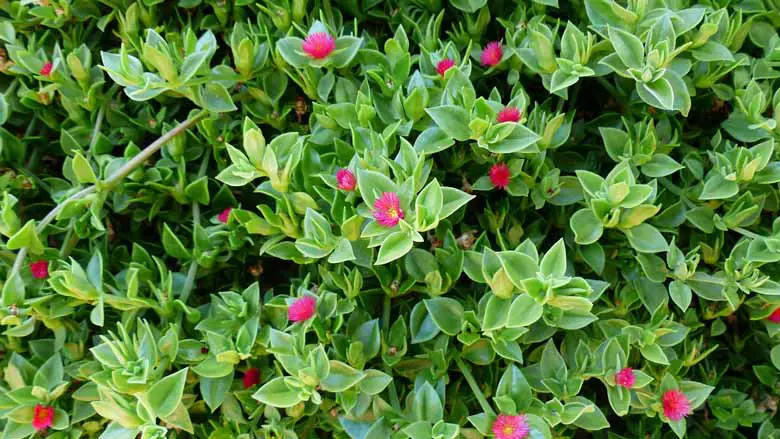
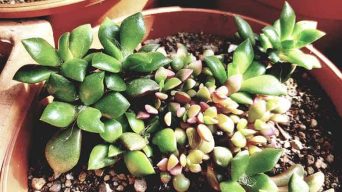
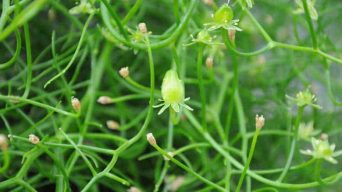
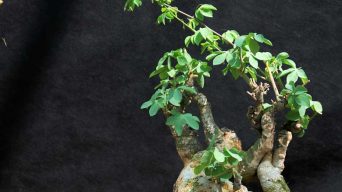
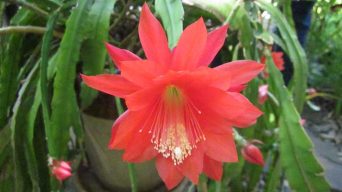
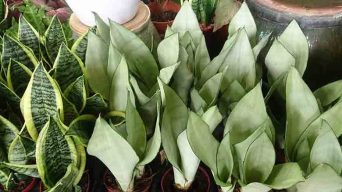
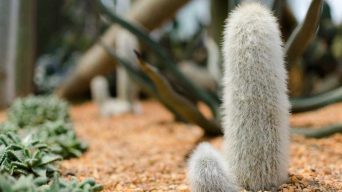
You’ve made some decent points there. I checked on the net to find out more about the issue and found most people will go along with your views on this site.